Arts in review: Season was one of expansion, world premieres
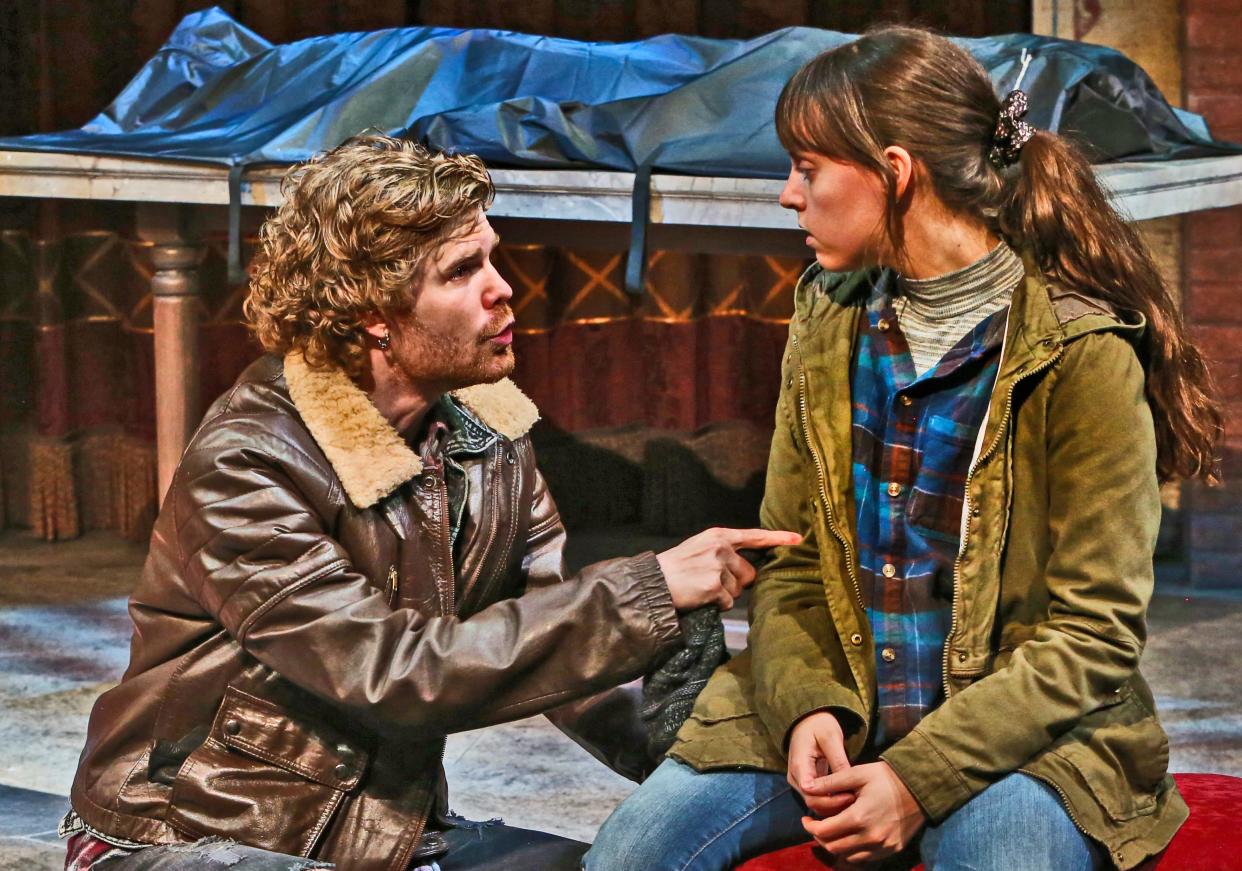
With the bad old days of COVID-19's dark halls and masked visitors behind them, the venues and promoters of Palm Beach’s arts scene offered a robust showcase of innovation and expansion for their audiences in the 2022-23 season.
From major exhibits at the Norton Museum to theatrical and musical world premieres, the season that was showed again, for those who haven’t been paying attention, just how vibrant and resilient this area’s cultural life really is. If you don’t know, now you know.
Here is a look back at some highlights:
Theater
Devotees of the theater in South Florida can see a wealth of productions from Jupiter south to Miami, and Palm Beachers need only take a short trip across the Intracoastal to see some of the most compelling.
Palm Beach Dramaworks, which is nearing its 25th anniversary, in February presented a world premiere, Carter Lewis’s "The Science of Leaving Omaha," the tale of a young woman in a literal dead-end job at a Nebraska crematorium whose life changes when a young man fleeing the police breaks in. Critics saw it as an interesting critique of the lives of America’s working poor. The season also featured a classic show in "Twelve Angry Men," Reginald Rose’s 1954 courtroom drama about a holdout juror who forces the 11 other members of his panel to reconsider their guilty verdict.
More: Chamber Music Society marks 10th, thinks big as it looks forward
More: Dramaworks' 2023-24 season to include 'Death of a Salesman,' two world premieres
More: Review: Miami City Ballet shows it understands 'Modern Masters' in West Palm Beach show
Amy Herzog’s "4000 Miles," a cross-generational drama about a 21-year-old man who ends a cross-country bicycle trip by showing up unannounced at the Greenwich Village apartment of his 91-year-old grandmother, opened the season in October. A different kind of family drama, Tracy Letts’ Pulitzer Prize-winning "August: Osage County," won plaudits in April for the powerful performances of its fine cast, including Sara Morsey and Kathy McCafferty.
Dramaworks still has one more show on the books, Suzan-Lori Parks' "Topdog/Underdog," the 2002 Pulitzer Prize winner for drama, about the rivalry of two struggling African American brothers named Booth and Lincoln. Kwesiu James and Jovon Jacobs star in the play, which is set for May 26-June 11.
A short trip further west brings you to the Kravis Center, which for years now has been presenting road companies of major Broadway musicals. This year’s crop included Anaïs Mitchell’s "Hadestown" in January, a sung-through retelling of the Greek myth of Orpheus and Eurydice, plus two musical adaptations of popular movies from the 1980s and 1990s, "Tootsie" in February and "Pretty Woman" in March. Two jukebox musicals also took the stage, including "On Your Feet," the musical bio of Miami’s own Gloria Estefan, and "Ain’t Too Proud," the story of The Temptations, which wrapped April 30.
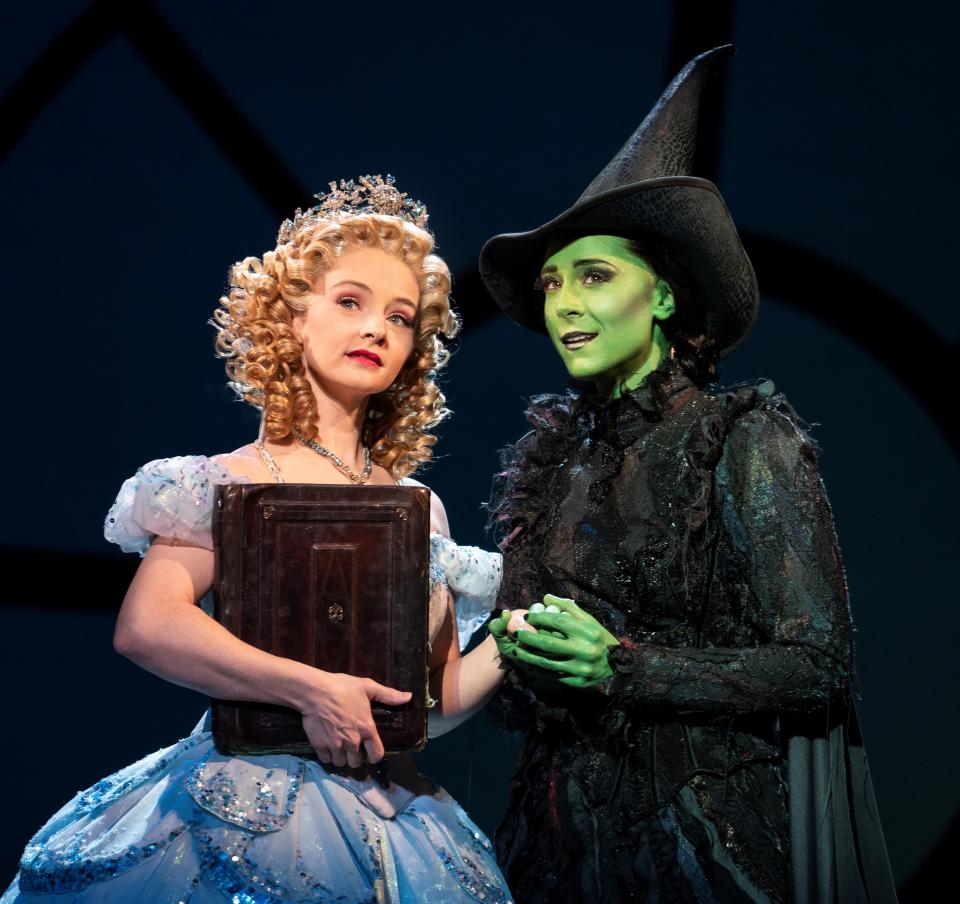
But perhaps the standout musical of the season was "Wicked," which had an almost two-week run in March and April. Stephen Schwartz’s musical, based on Gregory Maguire’s fan-fiction novel about the life of the Wicked Witch of the West from L. Frank Baum’s "The Wizard of Oz," has been a hit since its debut in 2003 and shows no signs of losing audience affection. Indeed, it’s being turned into a movie scheduled for release in late 2024, with Boca Raton’s Ariana Grande in the role of Glinda the Good Witch.
Music
Classical music has a strong following and energetic organizations in the Palm Beaches, and for the Palm Beach Symphony, continuing its growth under veteran conductor Gerard Schwarz, that meant adding a sixth concert to its five-concert season. But it also marked the world premiere of one of five commissions the orchestra has made to leading composers: Joseph Schwantner’s "Sojourn: Reflections on Thoreau." An intense and colorful piece that features a darkly eloquent cello solo in its second half, the work marked a step up to a new level for the orchestra, one that could call a new piece by a major American composer into being, and then give it a persuasive debut.
That March concert at the Kravis Center also featured the veteran pianist Misha Dichter in Gershwin’s Concerto in F, one of several eminent soloists who are happy to play for Schwarz, who led the Seattle Symphony for a quarter-century. The orchestra’s season opened in November with violinist Sarah Chang in the Bruch First Violin Concerto, and in December, it welcomed pianist Garrick Ohlsson for Beethoven’s "Emperor" Concerto.
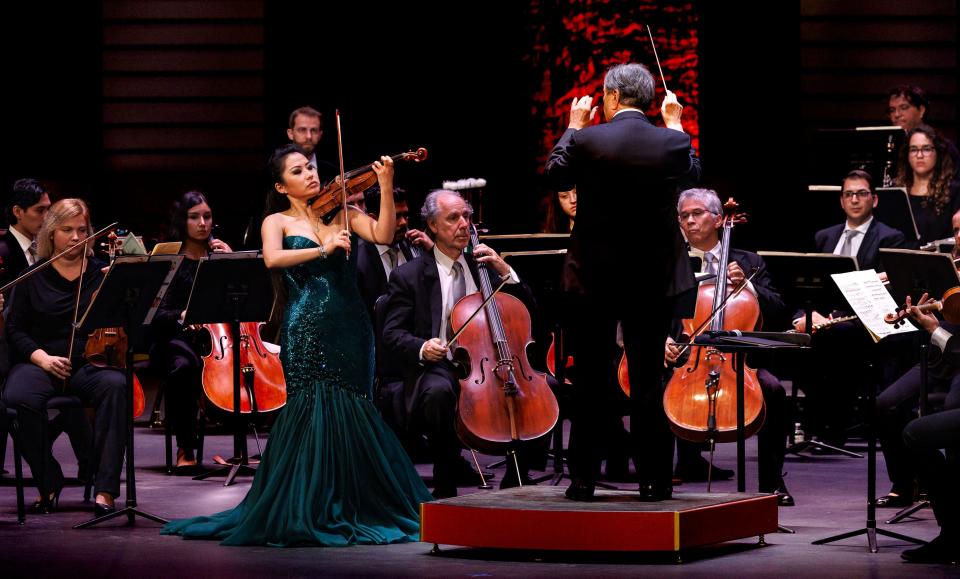
January saw the operatic soprano Susan Graham join the orchestra for music by Mozart, Berlioz and Franz Lehar, and after the Dichter and Schwantner concert in March, the popular violinist Joshua Bell performed the Mendelssohn Violin Concerto in April, featuring a cadenza of his own. The orchestra’s season ends May 15 with the Portuguese pianist Maria João Pires in Mozart’s Piano Concerto No. 23; the program also includes Franck’s Symphony in D minor and "Monuments," a work for trombone and orchestra by the contemporary American composer Adolphus Hailstork.
The Kravis Center itself was not at a loss for orchestral programming outside the Palm Beach Symphony, with appearances from the Philadelphia Orchestra, New World Symphony, Atlanta Symphony, Cleveland Orchestra, the Academy of St. Martin in the Fields, and orchestras from Hungary, Israel and Germany. Soloists included violinists Robert McDuffie (Munich Symphony) and Gil Shaham (Philadelphia), while the German violinist Anne-Sophie Mutter led her own Mutter Virtuosi in music of Bach, Vivaldi and Joseph Boulogne, the Mozart contemporary and master fencer now the subject of a Hollywood biopic, "Chevalier."
The Chamber Music Society of Palm Beach marked its 10th season with a deep lineup of leading chamber musicians heard in seven concerts, five of them at the Norton Museum of Art. Among the highlights was a concert of two string octets in January for the society’s anniversary, featuring violinists James Ehnes, Amy Schwartz-Moretti and Grace Park, violists Paul Neubauer and Brian Chen, cellist Nicholas Canellakis and bassist Blake Hinson. The soprano Joélle Harvey sang Bach and Handel at Bethesda-by-the-Sea in March, and before that, soprano Susanna Phillips, accompanied by Neubauer and pianist Anne-Marie McDermott, performed a program called “Songs of the Salon” in December at the Norton.
The society’s season also saw a significant expansion in September when it joined forces with the historic Boscobel House and Gardens in Garrison, New York, to launch the Boscobel Chamber Music Festival.
Meanwhile, the Palm Beach Opera added a first to its season by performing Verdi’s "Falstaff," the composer’s final opera, with Michael Chioldi in the title role of the sack-addicted old knight in a libretto drawn from Shakespeare’s "Merry Wives of Windsor" and "Henry IV, Part 1." Reviewers praised Chioldi’s performance, and said the production marked a milestone in the company’s 61-year history.
Palm Beach Opera also approached its two other operas, Puccini’s "Madame Butterfly" and Mozart’s "Cosi fan Tutte," with special attention to their stories, which are more problematic for contemporary audiences. For "Butterfly," the opera even hired a sensitivity consultant to address questions about how the composer and his librettists presented Japanese culture of the early 20th century. Both operas won critical praise for the singers in lead roles and overall production values.
The music series at the Society of the Four Arts was host to a farewell concert by the great Emerson String Quartet on Jan. 29. Widely considered the finest American string quartet now performing, the foursome is closing its instrument cases after 47 years. It will give its final concert at New York’s Lincoln Center in October. A quartet dedicated to the core Germanic repertoire, the Emersons’ Four Arts program held quartets by Haydn, Mendelssohn and Beethoven.
Also visiting the Four Arts were pianists Emanuel Ax and Juho Pohjonen, clarinetist David Shifrin (with the Miró Quartet in a tribute to Benny Goodman) and the Romeros Guitar Quartet. Artistic adviser Wu Han programmed three concerts focusing on the work of Franz Schubert, and NPR classical music host Martin Goldsmith’s story of his musician parents’ escape from the Nazis made for compelling film viewing and a poignant follow-up concert featuring music by composers silenced by the Holocaust.
This season also marked the return of the music series to the Flagler Museum’s Music Room. Five concerts featuring younger chamber groups were on the bill for the Tuesday night concerts, which always end with a meet-and-greet of the artists at a Champagne reception. Notable among the concerts this year was the rising American violinist Simone Porter, who in a Valentine’s Day recital joined by pianist Rohan De Silva performed works ranging from the 17th to the 21st centuries. She ended with a stellar reading of the early Violin Sonata by Richard Strauss.
Art
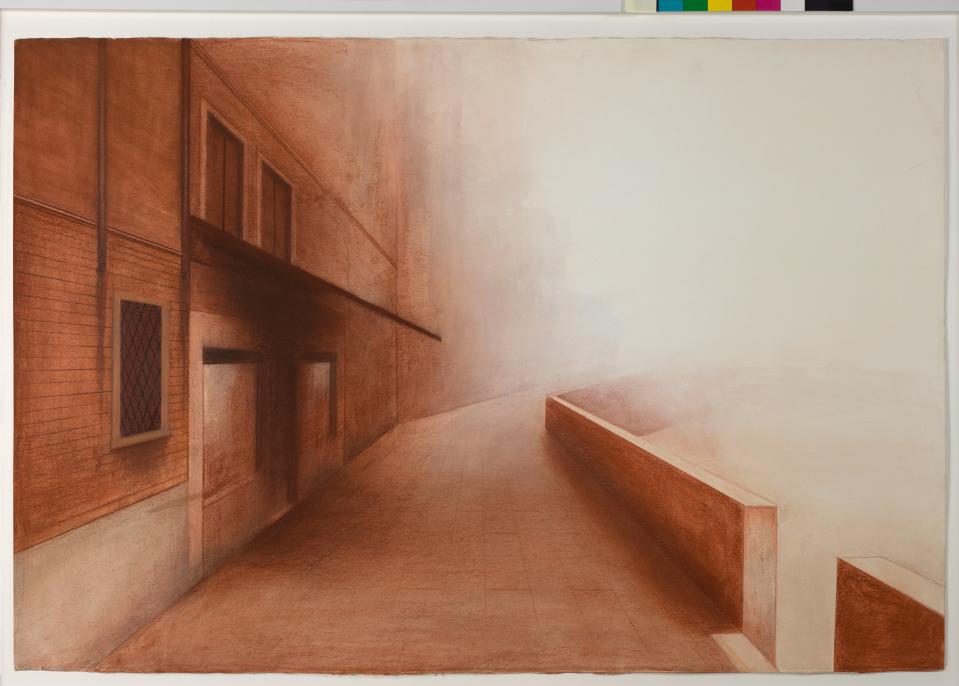
It was a big season for the Norton Museum of Art, which saw major exhibits of modernism, the nature paintings of Joseph Stella (best-known for his industrial images of New York) and fashion photography from an important archive amassed by Swiss collector Nicola Erni.
The Stella exhibit, which closed in January, was the first major show devoted to the Italian-American painter’s treatment of nature subjects. Works ranged from extravagant Bosch-like works such as "Tree of My Life" (1919), a painting in which almost every corner of the picture is filled with colorful natural imagery, to "Two Pink Waterlilies" (1943), a delicate silverpoint-and-crayon sketch on paper. The New York Times called the exhibition “stunning,” and it constituted an important reminder to the art world about this now somewhat forgotten artist.
"A Personal View on High Fashion and Street Style: Photographs from the Nicola Erni Collection, 1930s to Now" was another groundbreaker for the Norton. This display of more than 250 images marked the first time the assemblage has been seen in a public institution. The chief glory of the exhibit, which closed in February, is that it showed posed and street fashion with an equal eye toward its merit, and that it also showcased the work of some of the finest photographers of the 20th and early 21st centuries, from Richard Avedon, Irving Penn and Cindy Sherman, to Vivian Maier, Lee Friedlander and Garry Winogrand.
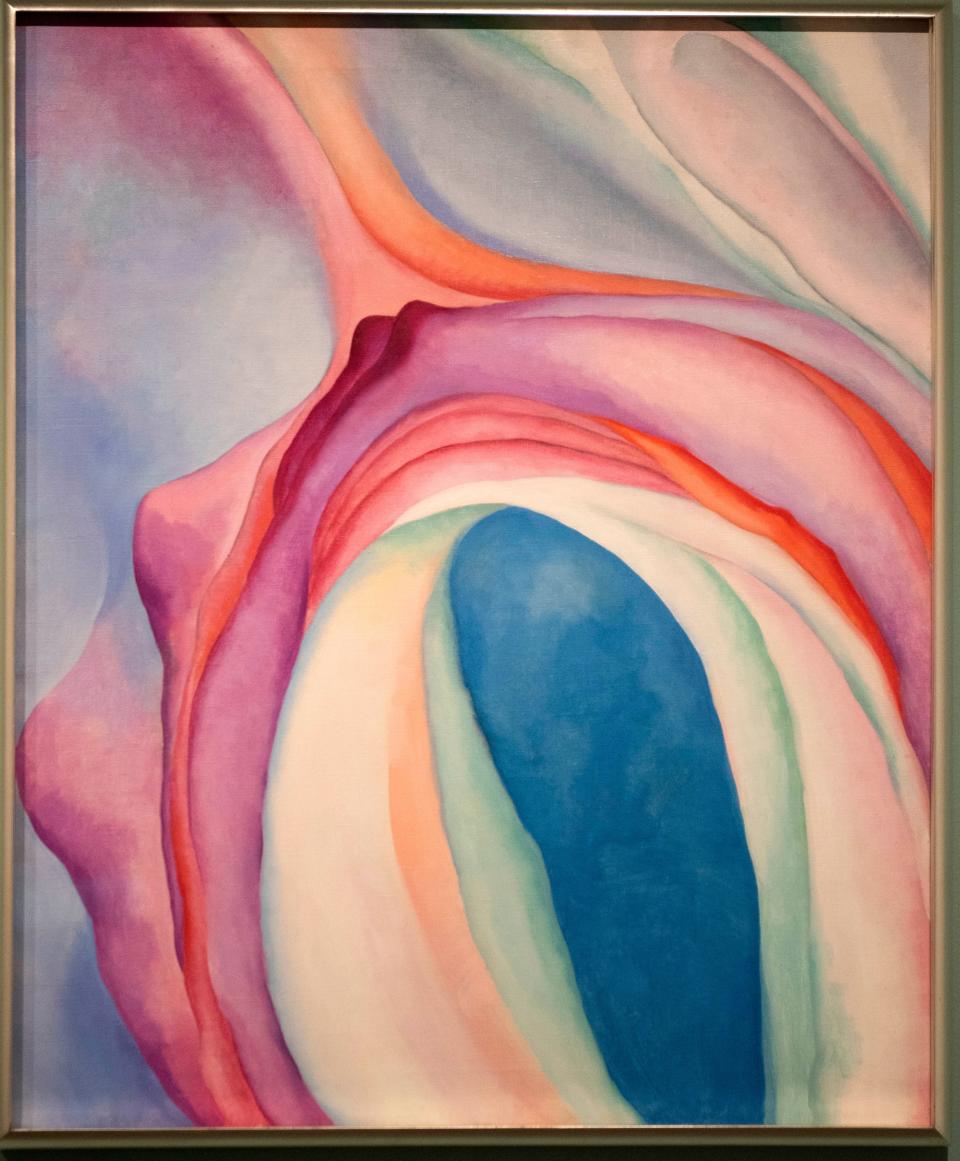
Viewers still have a chance to see the two large exhibitions devoted to modernism, which are running through July 16. "At the Dawn of a New Age: Early Twentieth-Century American Modernism" explores the years 1900 to 1930, and draws from the collections of the Whitney Museum of American Art. Represented here are leading figures such as Marsden Hartley, but also lesser-known figures who adopted abstract styles in an age of expansion and optimism.
The other exhibit, "From Man Ray to O’Keeffe: American Modernism at the Norton," contrasts the Whitney’s collections with modernist artworks held by the Norton. In both shows, curators have focused on works by previously underrepresented creators such as women and artists of color. The Norton believes doing that helps present a fuller picture of how modernist thought was reflected in the American art of its time.
Photography was the big theme this season at the Ann Norton Sculpture Gardens, which hosted veteran celebrity photographer Harry Benson as an artist in residence for "Harry Benson: Picturing History." Perhaps best-known for his images of an up-and-coming Liverpool quartet named The Beatles, Benson’s work on show at the Ann Norton includes photos of major luminaries such as Queen Elizabeth II, Willie Nelson, Richard Nixon, Winston Churchill and Gerald Ford. There’s also a photo of Ethel Kennedy in the moments after her husband, U.S. Sen. Robert F. Kennedy, was fatally shot in a Los Angeles hotel.
There’s still time to see the exhibit, which runs through June. Running along with it is "SculptHER," an exhibit of works by four woman sculptors, each hailing from a different country (Colombia, Jordan, U.S. and South Korea). And on the garden grounds through May are the whimsical lifesize fruits and vegetables of the team of Luis Montoya and Leslie Ortiz.
Art exhibits returned to the Flagler this season, too, with a look at the history of Whitehall itself in the fall, and for the winter, "The American West During the Gilded Age," a show that examined aspects of the West far removed from frontier romance, focusing instead on infrastructure vitals such as railroads, the fur trade, cattle ranching and mining. This well-thought-out exhibit didn’t leave out the more mythic aspects of the West, offering images of the lawmen and the outlaws that still define that region in the public mind.
The Society of the Four Arts scored a coup this winter with an exhibit of paintings by Eduard Angeli, an Austrian artist admired for his moody, atmospheric landscapes. The Four Arts show, "Eduard Angeli: Cities on Water," which closed in April, marked the first U.S. exhibit devoted to work by the 80-year-old artist. It consisted of 18 brooding images, mostly in charcoal, of three coastal cities in Europe and Eurasia: Venice, Istanbul and St. Petersburg. Uninhabited by people, these striking images of a fogged-in canal, an empty studio with an unoccupied chair, and the moon over the Golden Horn are the kinds of pictures that in their desolation are nonetheless alive with backstory.
The Four Arts also presented two traveling exhibits: "Hard Bodies," a collection of fascinating contemporary Japanese lacquer art that patrons may have seen several years ago at the Morikami Museum in western Delray Beach, and "Contemplating Character," a remarkable overview of more than 80 works in portraiture on paper, from Jacques-Louis David to Lucian Freud; drawings by Edgar Degas, William Merritt Chase and R. Crumb also were included.
Dance
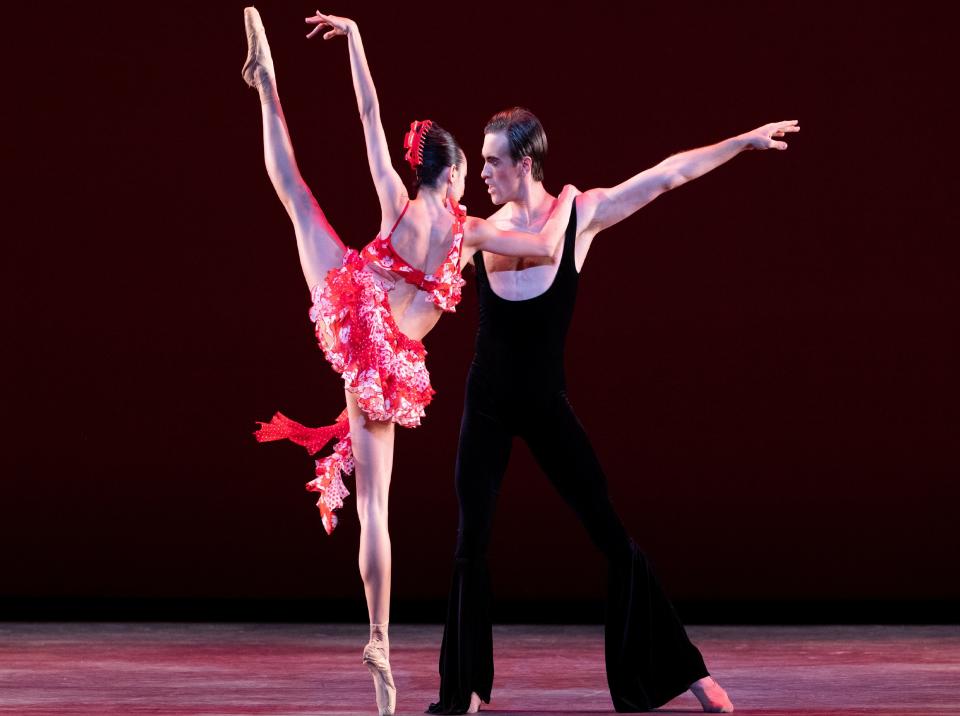
Miami City Ballet continued its expansion of its core repertory of Balanchine and Robbins ballets with new works by Sweden’s Pontus Lidberg and the American Amy Hall Garner. In its February residency at the Kravis, Lidberg’s "Petrichor," set to the Violin Concerto No. 1 of Philip Glass, proved to be a densely designed dance in which projections of a coming storm (“petrichor” is the familiar aroma of rainfall) were offset by the colors of the dancers’ hand-painted costumes.
Garner’s "Resplendent Fantasy," with music by Jonathan Dove, the early 20th-century Armenian priest known as Komitas, and Oliver Davis, effectively combined the worlds of modern dance and ballet in demanding, often fast-paced fashion.
Another new ballet, by the Miami-based Durante Verzola, made its debut in April. "Sentimiento," which was inspired by Robbins’ "Dances at a Gathering," presented a ballroom-style series of intimate dances set to music by Cuba’s Ernesto Lecuona.
The company opened the season in November with a masterpiece, John Cranko’s setting of "Romeo and Juliet," with Sergei Prokofiev’s now-classic score. Three different couples shared the spotlight over three performances, with critics reserving special praise for Isadora Valero and Brooks Lendegger.
The company's season continues this month with a program of two ballets apiece by Balanchine ("Square Dance," "Symphony in Three Movements") and Robbins ("Afternoon of a Faun," "Antique Epigraphs").
This article originally appeared on Palm Beach Daily News: New work, expanded programming focus of 2022-23 arts season

